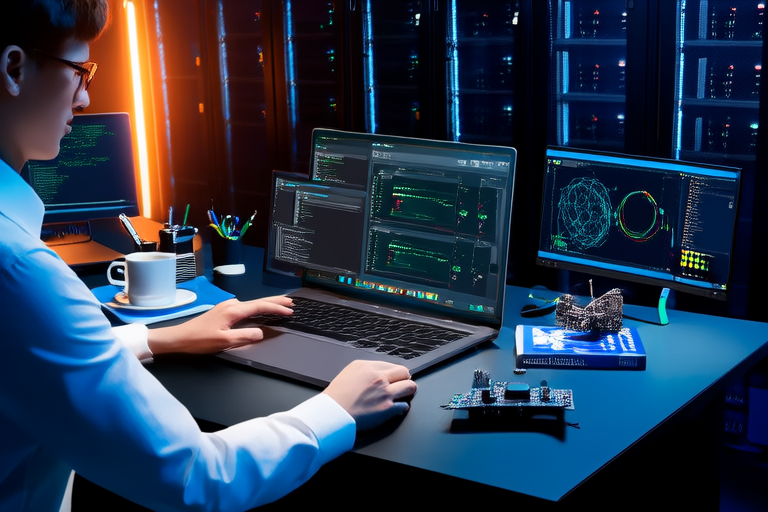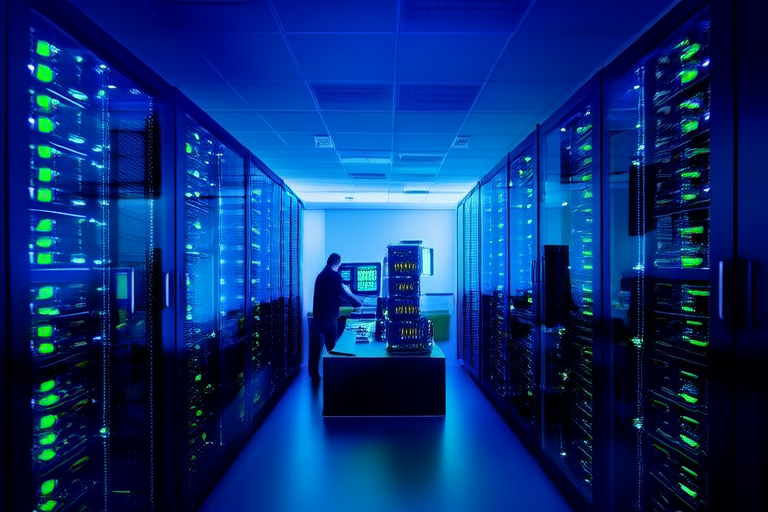“`html
The Evolution of Machine Learning: From Algorithms to Automation
Machine learning has emerged as one of the most transformative technologies of the 21st century, reshaping industries, enhancing human capabilities, and driving innovation across a wide range of fields. This article explores the journey of machine learning, tracing its roots from basic algorithms to the sophisticated automation systems that now power many aspects of our lives.
Introduction
Machine learning refers to the ability of computers to learn from data without being explicitly programmed. It is a subset of artificial intelligence (AI) that enables systems to improve their performance over time through experience. Over the past few decades, machine learning has evolved from simple rule-based systems to complex, adaptive algorithms capable of solving real-world problems. Today, it plays a pivotal role in fields ranging from healthcare to finance, and from entertainment to transportation.
This evolution can be traced back to the early days when researchers developed basic algorithms to tackle specific tasks. As these algorithms became more sophisticated, they laid the groundwork for the advanced forms of automation we see today. The journey from algorithms to automation reflects both the growth in computational power and the increasing sophistication of mathematical techniques used in machine learning.
Early Days of Machine Learning
The origins of machine learning can be traced back to the mid-20th century, when pioneers like Arthur Samuel began exploring the idea of creating programs that could learn from experience. One of the earliest examples of machine learning was the Perceptron, an algorithm introduced by Frank Rosenblatt in 1957. The Perceptron was designed to classify data points into two categories based on their features. Although limited in scope, it demonstrated the potential of machine learning for pattern recognition.
Other foundational algorithms included decision trees, which provided a way to make decisions based on a series of yes/no questions, and linear regression, which allowed for the prediction of continuous values. These early algorithms were relatively simple but formed the basis for more advanced techniques.
Neural networks, inspired by the structure of the human brain, also played a crucial role in the early development of machine learning. By modeling data as interconnected nodes, neural networks could capture complex patterns and relationships in large datasets. The work of pioneers like Geoffrey Hinton and Yann LeCun in the late 20th century helped to advance the field of neural networks, paving the way for deep learning.
Advancements in Algorithms
As machine learning matured, researchers developed more sophisticated algorithms capable of handling increasingly complex tasks. Support vector machines (SVMs), for example, provided a powerful method for classification and regression by finding the optimal boundary between different classes in a dataset. Another important development was k-means clustering, which allowed for the grouping of similar data points into clusters.
Ensemble methods, such as random forests and boosting, further enhanced the accuracy and robustness of machine learning models by combining multiple weaker models to create a stronger one. These techniques, along with others like gradient boosting and XGBoost, have become widely used in practical applications.
The rise of deep learning marked a significant milestone in the evolution of machine learning. Deep learning uses neural networks with many layers to automatically extract features from raw data, making it particularly effective for tasks like image and speech recognition. Reinforcement learning, another major advancement, allows machines to learn optimal behaviors through trial and error, making it useful for applications like game playing and autonomous navigation.
Transition to Automation
One of the most significant shifts in machine learning has been the move toward automation. Traditional machine learning required extensive expertise in data preprocessing, feature engineering, and model selection. However, with the advent of automated machine learning (AutoML), non-experts can now build and deploy machine learning models with relative ease.
AutoML tools and platforms, such as Google AutoML, H2O.ai, and DataRobot, automate many of the steps involved in the machine learning pipeline, from data cleaning to model evaluation. These tools leverage techniques like hyperparameter tuning and model selection to optimize performance, allowing users to focus on higher-level tasks.
The democratization of machine learning has been further accelerated by the availability of cloud-based services and open-source frameworks. Cloud platforms like AWS SageMaker, Google Cloud AI Platform, and Microsoft Azure Machine Learning provide scalable infrastructure for building and deploying machine learning models. Open-source libraries like TensorFlow, PyTorch, and scikit-learn have also played a critical role in making machine learning accessible to a broader audience.
Current Trends and Future Directions
Today, machine learning is experiencing rapid growth and innovation. One of the most pressing challenges in the field is ensuring that AI systems are explainable and transparent. As machine learning models become more complex, it is essential to understand how they arrive at their decisions. Techniques like LIME and SHAP are helping to address this issue by providing insights into the factors that influence model predictions.
Ethical considerations are another important area of focus. As machine learning becomes more pervasive, concerns about bias, privacy, and fairness have grown. Researchers are working to develop guidelines and best practices to ensure that AI systems are used responsibly and ethically.
Looking ahead, the integration of machine learning with other emerging technologies, such as the Internet of Things (IoT) and robotics, holds great promise. Machine learning can enable smarter, more efficient systems that adapt to changing environments and user needs. Additionally, advancements in areas like quantum computing and neuromorphic computing may lead to breakthroughs that further accelerate the development of AI systems.
Conclusion
The evolution of machine learning from simple algorithms to advanced automation represents a remarkable journey of innovation and discovery. From its early days as a niche academic discipline to its current status as a driving force behind many of today’s most exciting technological advances, machine learning has transformed the way we live, work, and interact with the world around us.
As machine learning continues to evolve, its impact on society, business, and technology will only grow. By fostering collaboration between researchers, engineers, and policymakers, we can ensure that this powerful tool is used to benefit all of humanity. The future of machine learning is bright, and the possibilities are endless.
“`




